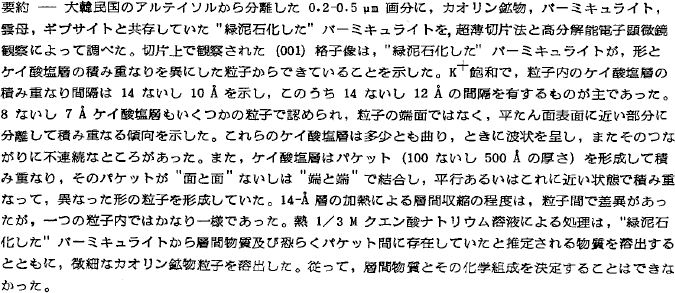Published online by Cambridge University Press: 02 April 2024
“Chloritized” vermiculite coexisting with kaolin-group minerals, vermiculite, mica, and gibbsite in the 0.2–0.5-µM fraction separated from a Korean Ultisol was studied by ultramicrotomy and high-resolution electron microscopy. The (001) lattice images observed from thin sections showed that the “chloritized” vermiculite was composed of particles which differed in their shape and the stacking of silicate layers. On saturation with K+, the silicate layers had spacings of 14–10 Å, with 14–12-Å layers being dominant. The 8–7-Å layers of a few particles appeared to be segregated close to the basal plane surfaces, but not necessarily close to the edge surfaces. The silicate layers were more or less curved and wavy and were commonly discontinuous. They formed packets (100–500 Å thick) by stacking, which were associated “face-to-face” and/or “edge-to-edge” or stacked parallel or subparallel to form particles of different shapes. The extent of interlayer collapse of the 14-Å layers on heating differed from one particle to the other, but was fairly uniform within a particle. Treatment with hot 1/3 M sodium citrate dissolved the interlayer material and possibly the material present between the packets from the “chloritized” vermiculite and from a few fine plates of kaolin-group minerals. The interlayer material and its chemical composition, therefore, could not be determined.
